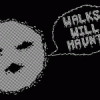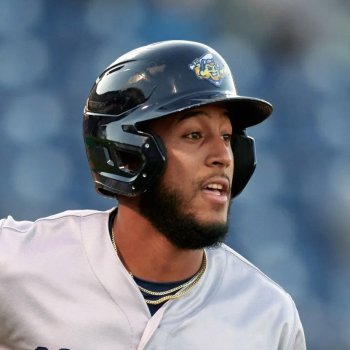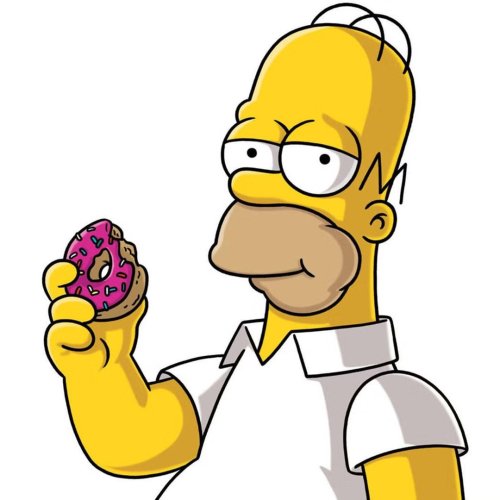
Twins Video
About three hundred yards away from Hammond Stadium – or, if you prefer the dinger system, one Nelson Cruz batting practice bomb – is the area commonly referred to as the backfields. The Twins’ backfield wheel contains three full-sized fields and a truncated infield-only one. There are two bullpen areas wedged between three of the fields, and an observation tower blasting tasty tunes.
Here, minor-league players will have almost every swing, pitch, throw and catch tracked.
The number of people gathering data has grown exponentially from the previous season. Then again, the number of tracking devices has also grown exponentially.
The Trackman units have been hanging on the fencing behind home plate at the three large fields for several seasons. The many Rapsodo 2.0 devices are new this year, as are the multiple high-speed cameras. Hitters have Blast motion sensors attached to their bats and will undergo a 4D body movement sensor session in the covered batting cages before the day's activity starts.
Meanwhile, when live at-bats begin, standing behind the pitcher's mound are Twins employees, protected by screens, charting everything on iPads. The Rapsodo devices in front of every home plate area are rapping along. Trackman, the all-seeing eye-in-the-sky, is tracking man.
The place is buzzing with data collection.
“Just comparing this year to last year, it’s drastically different,” says Tanner Swanson, the organization’s catching coordinator who was brought in before the 2018 season.
The data isn’t the only new element. Coaches and players both rave about the new schedule and some of the new training methods.
”Drastically more efficient,” Swanson says about the workouts. “I think there’s a lot of teaching going on, which you could argue may or may not be the norm for the typical spring training environment. It’s been a major upgrade, I think. Players have more energy, are excited, feels like they are progressing and getting better. It’s been a good start, no question.”
One bullpen area is filled with pitchers and catchers trading throws in a popping cadence. It may appear routine but the Twins have made tweaks to this activity as well. According to side-arming prospect Tom Hackimer, the bullpen sessions are separated into two categories – one for the pitcher to focus on his mechanics and one for the pitcher to focus on executing over the plate.
“It’s half of what we call ‘over the rubber,’ what you want to work on, the second half we work on is ‘over the plate,’ pitch sequencing, catcher calling the game, where you want to locate your stuff,” says Hackimer. “It’s definitely a big step forward having that structure.”
There’s classroom time for all practices. On the pitching side, Twins’ minor-league pitching coordinator Pete Maki holds meetings to discuss strategy, philosophy, and the technology to help players understand why they may feel like lab rats at times.
“We just had a meeting,” Hackimer says. “The Core Principles of Pitching meeting. It can easily be an hour, hour-and-a-half meeting but Pete Maki just cut it off at a half-hour. He’s like, most people can’t pay attention after a half-hour, that includes the coaches, that includes you guys, so we’re gonna cut it right here.”
On the other bullpen area, hitters stand in against pitchers. There are Rapsodo devices here as well. Cameras too. Staff members charting everything. Former Twins great Johan Santana observes the program. And paid umpires are calling balls and strikes. This was a concept Swanson and the minor league staff came up with to help replicate the in-season experience.
“It was an attempt to give our catchers more objective feedback,” says Swanson. “It’s one thing to say with your eyes, ‘hey, looks good’ or ‘nice job,’ but to really look and say, okay we gained strikes here, we lost strikes here.”
Another improvement is individualized hitting plans led by newly hired minor-league hitting coordinator Pete Fatse and his coaching staff.
While the bulk of the work happens inside the cages, hitters get to take small group BP on the field to see the fruits of their labor in the sun. With one group of hitters, Fatse throws batting practice. One hitter pulls his first pitch — a hard-hit one-hop smash down the third base line. Fatse shakes his head.
“That way,” he sticks out his arm and gestures toward the left-center field gap. “That way!”
Fatse says he wants the hitters to design their swing paths similar to Miguel Cabrera or JD Martinez, who laser baseballs into the middle of the field but can do damage pull side on pitches inside.
The hitter nods then rifles the next series of pitches into the opposite field gap like Fatse directed.
“See, that’s the way,” he exclaims. “I should hug you right now.” Fatse sticks out his arms from behind the screen like he was offering the hitter a squeeze from 50 feet away. The player laughs.
Michael Cuddyer joins another session to give his input. This is a newer endeavor, getting the former big league players to interact with the minor league players and staff. Earlier in the week, Torii Hunter spent time at the minor league cages.
“He was giving us some high praise in respect to how we were going about what we’re doing,” Fatse said of his experience with Hunter.
"We didn’t have too many big league players come down and talk to us,” recalled Cuddyer during his tenure in the minors. Players like Harmon Killebrew and Rod Carew spent time with Cuddyer but only after he made the Twins.
For Twins prospect Taylor Grzelakowski, a catcher who finished 2018 third on the Miracle in home runs (8) and slugging (.458), he got the chance to tap into not only Fatse’s biomechanical expertise but with Cuddyer’s knowledge from his 15-year career.
Thus begins a master class in hip direction.
Cuddyer demonstrates how he would fire his hips in the swing behind the ball, imparting violent rotational contact. Fatse shares his piece. Grzelakowski nods, has a dialogue with the two instructors and goes back into the batting turtle to try to implement that feel to his swing.
“Perception is not always reality,” Cuddyer says about trying to translate a feel in the swing component to the young prospect. “What he feels might not always be what he’s doing. And same with me. What I feel in my swing, I might not be verbalizing well. That’s what hitting is, it’s conversations. There’s not one way to do it. There are many different cues that result in the same swing and certain language works for different players.”
Fatse echoes Cuddyer’s comments about the common language of hitting.
“We’re trying to get guys to understand how their body moves and how to execute their swing as opposed to just thinking about things that are like, ‘hey just take your hands to the ball,' ” Fatse says. “That can mean seven different things to seven different people.”
The hitting development component is heavily influenced by science and modern hitting theory. They have underload/overload bat-speed programs. They have two pitching machines which fire a high-spin fastball and a breaking ball, and the hitter doesn’t know which is coming, hoping to improve pitch recognition. De-emphasized are tools like batting tees, as Fatse says players should focus on hitting a moving target over a stationary one.
Some of the Twins players have taken notice of the new practices.
“When I first got here before camp, it was pretty crazy to see what they are doing on the minor league side with all the radar guns and using weighted bats to speed up their bats,” says outfielder Max Kepler. “I wish I had that when I was younger.”
The minor league camp, with its wonderful toys, isn’t an island unto itself. The team invested heavily in coaches – coaches who are constant learners and thrive in a data-driven environment, and they don’t plan to hide them out there.
“One thing that we’ve spent a lot of time talking about, and hopefully even more as time goes on, is the exchanging of ideas and bringing both sides instead of there being separation between the big leagues and minor league,” Baldelli says.
The cohesion happened almost immediately for some. Fatse says when he was hired, Twins’ hitting coach James Rowson invited him out to dinner to talk shop. The dinner discussion wound up lasting over four hours.
“I think the one unique thing about the Twins is that there’s no divide,” Fatse says. “They’ve made it (a) really transparent feel here. They want there to be constant collaboration and dialogue and the fact that there are big league players that come down and hang out on the backfields with players, you just don’t find that everywhere.”
“Rocco and his staff have been unbelievable,” Swanson added. “They have an open door policy for coordinators and coaches to come and go. I’ve spent a lot of time going back and forth. They’ve made it clear from the beginning that they want it to be an inclusive environment and they’ve gone out of their way to make myself and others feel welcomed and valued. There’s definitely a cohesiveness going on between our major-league operations and our minor-league groups.”
When you step back to appreciate the activities, the sheer logistics of the multi-faceted practice is mind-blowing. Hundred of bodies are accounted for and every one of them appears to be participating in something at any given moment. It’s a baseball development mosaic, a well-tuned symphony designed with a singular purpose: to make players better.
The Twins, indeed, are doing quality work back here.
MORE FROM TWINS DAILY
— Latest Twins coverage from our writers
— Recent Twins discussion in our forums
— Follow Twins Daily via Twitter, Facebook or email
— Become a Twins Daily Caretaker






Recommended Comments
Join the conversation
You can post now and register later. If you have an account, sign in now to post with your account.
Note: Your post will require moderator approval before it will be visible.